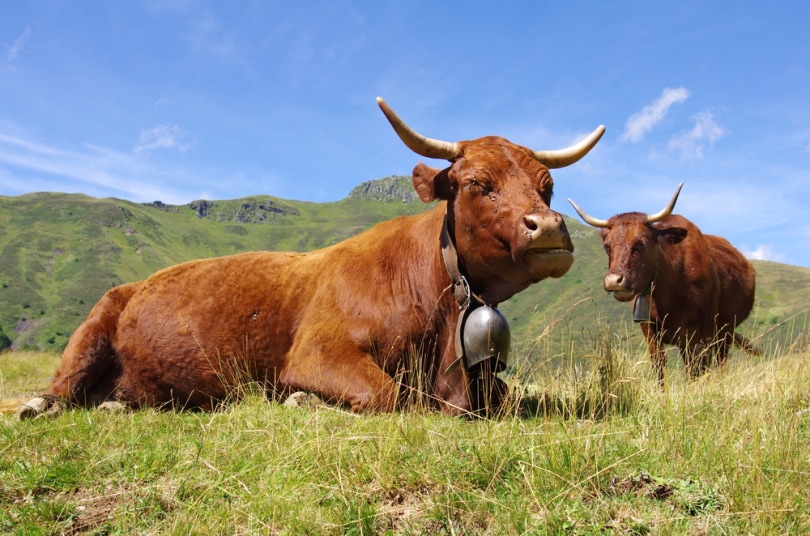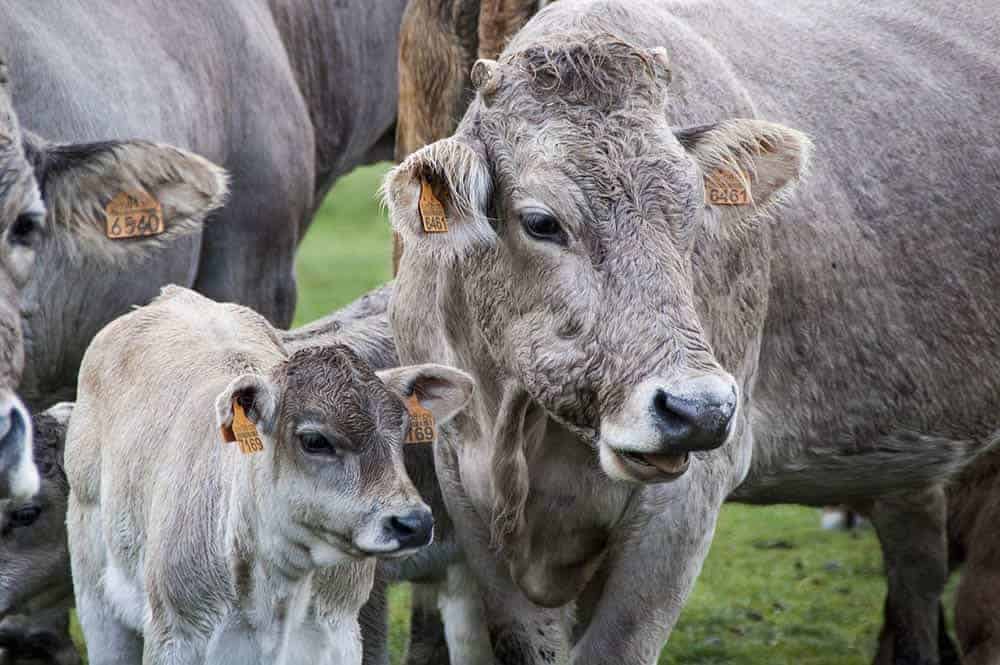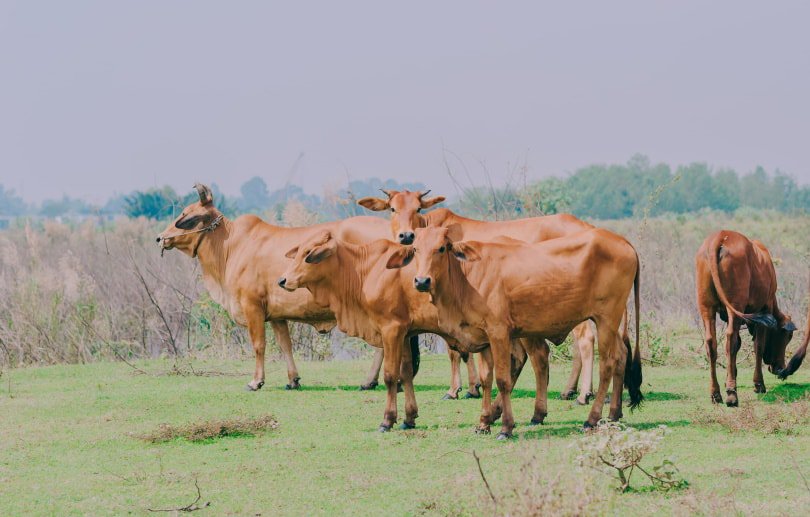We’ve all been driving down the road and spotted a herd of cattle. Most of us offer these magnificent creatures a simple glance and then continue with our day. In the back of our minds, however, we noticed certain things. Some of the cattle in the field didn’t have horns. That means they’re the female cows. A couple did have horns, so those are the bulls. Right? Wrong. Sure, we’ve all made the mistake, and most likely keep making it, but horns don’t determine sex.
Do all cows have horns? The answer is yes unless science steps in. Certain cattle breeds are born without horns and will never develop them. These are called polled cattle. Most breeds, however, especially dairy cows are born with small horns. While most of us are used to thinking of only bulls and steers with horns, the females of the herd also rock fancy headpieces. Let’s learn a bit more about cows and their horns to understand why they have them.

Understanding the Terms Used for Cattle
Before we dive deep into the world of cows and their horns, it’s important to understand the common terms used when discussing these animals. This will make identification easier. Let’s take a look at those terms and their meanings below.
- Cow – cattle female who has had a calf or several calves.
- Heifer – a female who has yet to birth a calf.
- Bull – a cattle male that is still intact.
- Steer – a male that has been castrated.
- Calf – a cattle baby either male or female.
- Cattle – both genders together or separate.
As you can see, there are several terms used when talking about cows. Most of us common folk simply call them all cows until we’re faced with a bull. Either way, understanding that all cattle are born with horns, male and female unless they are from specific hornless breeds.

Why All Cows Have Horns
People have different opinions on why cows have horns. Some believe the horns help aid in regulating body temperature. Others see the horns as a means for helping a cow’s digestion. Possibly the biggest reason cattle grow horns though is protection. Just like with bulls and steers, with a large set of horns, cows would be better able to defend themselves against predators and even protect their young.
What Are Polled Cows?
Polled cows are those born without horns. In most instances, this is done with planned breeding to help end horns in other cattle breeds. If a bull is polled, and mates with females who aren’t. Most likely the offspring will also be polled. This makes life easier for farmers who raise cattle and find themselves needing to dehorn their calves.

When Do Horns Develop?
Cows are born with horn buds. These little bumps on their heads are barely noticeable at first but will soon become more pronounced. These buds are also separated from the cow’s skeleton in the beginning. By the time a calf reaches 3 months of age, the bones will fuse and the horns will begin to fully grow in.
The Advantages to Removing Horns
Cows that have had their horns removed are safer to be around. On average, cows weigh roughly 1500 pounds. An animal of this size can do a lot of damage with a horn attached to its head. Property and bodily damage caused by horns is something most farmers try to avoid.
Another advantage to removing horns is the space it saves. A cow with a full set of horns requires more room. If they aren’t given proper area, the likelihood of them hurting other cows, even their own calves, is very possible. Horns can also become damaged. When they break or snap off, cows can lose too much blood or set up an infection.

The Disadvantage of Removing Horns
Possibly the biggest disadvantage to removing a cow’s horns is leaving the animal defenseless. Yes, cows are big, but they aren’t naturally aggressive. Without their horns, cows and calves are left with no way to fend off predators. This is where the bulls and steers step in to keep things safe around the farm.
Is Dehorning Painful?
Yes, dehorning a cow is painful. Dehorning is done when a cow’s horns have fully grown in and are fused to the skeleton. This is why most farmers opt for de-budding their calves while they are very young. De-budding is still painful, but far less invasive than what an adult cow would suffer through when having its horns taken out.
Another option to keep people and other livestock safer around cows with horns is to blunt the horns or attempt to file them down. Yes, the horns are still there but they are far less deadly than if they were left to their own devices.


Conclusion
As you can see, all cows are born with horns unless they have been specifically bred as polled cattle. While a cow’s horns may grow to be beautiful and something for the world to see, they are simply too difficult for life on a farm. If you want to see a cow’s horns, make sure you look when they are young. It may be your only chance.
Next on your reading list:
Featured Image Credit: Piqsels
